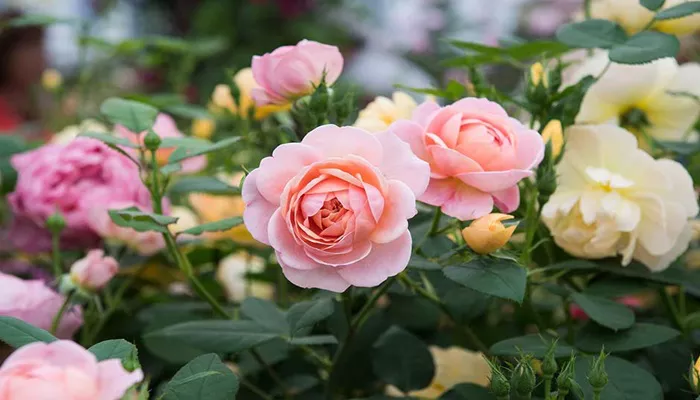Valentine’s Day, celebrated on February 14th, is renowned as a time to express love and affection. It is a day marked by grand gestures, heartfelt notes, and, perhaps most famously, the exchange of flowers. But is giving flowers on Valentine’s Day a necessity, or can one find alternative ways to convey their feelings? This article delves into the cultural, emotional, and personal aspects of flower-giving on this romantic holiday.
The Tradition of Giving Flowers on Valentine’s Day
Historical Roots and Symbolism
The tradition of giving flowers on Valentine’s Day has deep historical roots. Flowers have long been symbols of love and beauty, dating back to ancient civilizations. In the Victorian era, flowers were used to convey emotions and sentiments that could not be spoken aloud. The language of flowers, or floriography, allowed people to communicate complex feelings through carefully chosen blooms.
On Valentine’s Day, roses are the most popular choice, particularly red roses, which symbolize deep love and passion. Other flowers, such as lilies, tulips, and carnations, also carry their own meanings and are selected based on the recipient’s preferences or the nature of the relationship.
Cultural Significance
Different cultures have various traditions surrounding flowers. In Western cultures, giving flowers is almost synonymous with Valentine’s Day. In contrast, other cultures may emphasize different symbols of love or have unique ways of celebrating the day. For instance, in Japan, the focus might be more on giving chocolates, while in France, a romantic dinner might be preferred.
The Emotional Impact of Receiving Flowers
A Gesture of Affection
Flowers have the power to evoke strong emotional responses. The sight of a beautiful bouquet can lift spirits and bring joy. For many, receiving flowers on Valentine’s Day is a cherished gesture that reinforces feelings of love and appreciation. The act of giving flowers is often seen as a thoughtful and romantic gesture that requires little explanation.
Personalization and Meaning
Flowers are not just generic gifts; they can be personalized to reflect the recipient’s tastes and preferences. A bouquet of their favorite flowers or a mix of colors that hold special meaning can make the gesture even more significant. This personalization adds an extra layer of thoughtfulness and demonstrates a deeper understanding of the recipient’s likes and dislikes.
Alternative Ways to Celebrate Valentine’s Day
Beyond Flowers: Other Romantic Gestures
While flowers are a classic choice, there are numerous other ways to celebrate Valentine’s Day that might resonate more with some individuals. Here are a few alternatives:
Personalized Gifts: Items like custom jewelry, photo albums, or handwritten letters can offer a personal touch that flowers alone might not convey.
Experience-Based Gifts: Planning a special outing or experience, such as a romantic dinner, a weekend getaway, or a cooking class, can create lasting memories.
Acts of Service: For some, acts of service can be a meaningful way to show love. This could involve taking on chores, cooking a special meal, or helping with a project that’s important to the other person.
Quality Time: Spending uninterrupted time together, whether it’s through a shared hobby or simply enjoying each other’s company, can be incredibly valuable.
Consideration for Personal Preferences
It’s important to consider the preferences and expectations of your partner or loved one. While flowers might be a beloved tradition for many, others might have different tastes or find other gestures more meaningful. Communicating and understanding each other’s expectations can help in choosing the most appropriate way to celebrate.
The Role of Flowers in Modern Celebrations
Changing Trends
In recent years, there has been a shift in how people approach Valentine’s Day. Some are moving away from traditional gifts like flowers in favor of more unique or personalized expressions of love. This shift reflects a broader trend towards valuing personal significance over tradition.
Sustainability and Ethical Considerations
With increasing awareness of environmental issues, some people are opting for sustainable and ethical choices in their gift-giving. This includes selecting locally grown flowers, choosing plants that have a longer life, or even making charitable donations in the recipient’s name. These considerations align with a growing movement towards more conscious consumerism.
see also: What Color Flowers for Valentine’s Day?
Conclusion
In summary, while giving flowers on Valentine’s Day is a cherished tradition with deep historical and emotional significance, it is not a requirement for expressing love. The essence of the holiday lies in the sentiment behind the gesture rather than the specific gift itself. Whether you choose flowers, a personalized gift, or an experience, what matters most is the thought and care you put into making the day special for your loved one.
By understanding the traditional role of flowers and considering alternative ways to celebrate, you can make Valentine’s Day meaningful and memorable in a way that aligns with both your personal preferences and those of your partner. Ultimately, the best gift is one that reflects genuine affection and appreciation, whatever form it may take.


